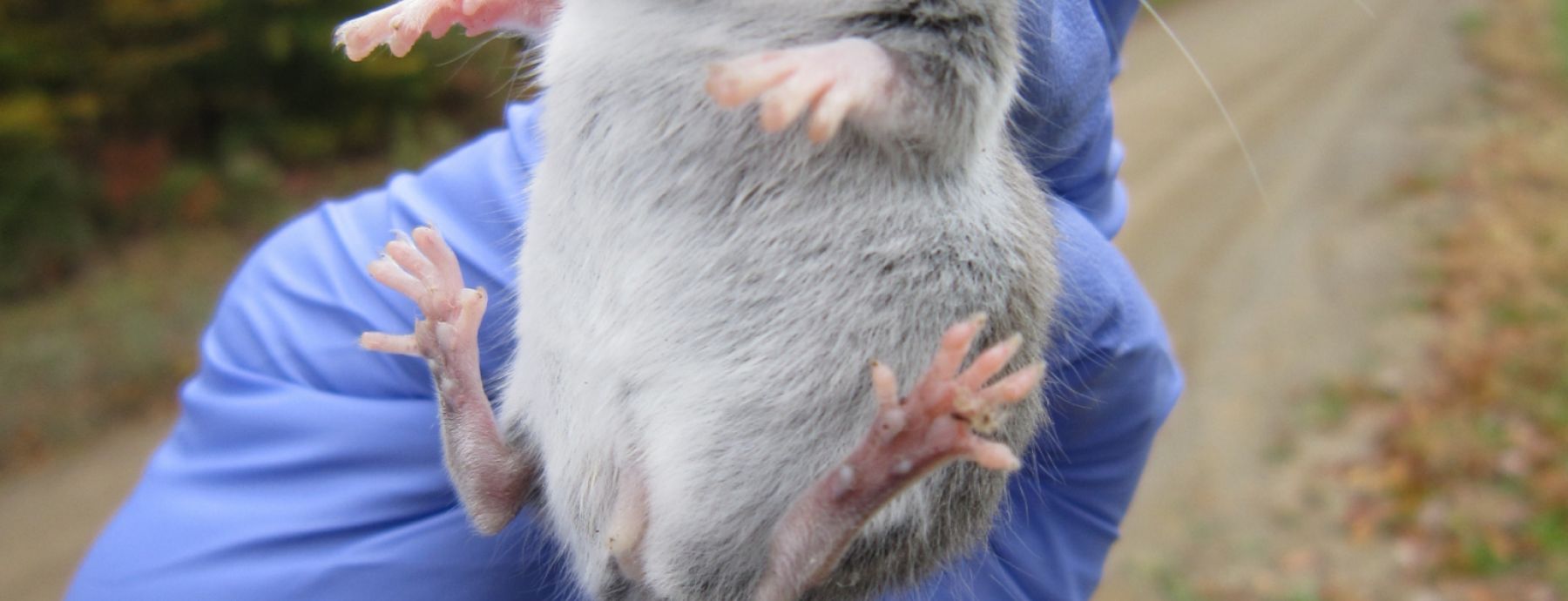Hepatitis C Virus and human pegiviruses infect 2% & 5% of people worldwide, respectively, yet little is known about them. The lack of robust small animal models of these viruses has precluded sophisticated in vivo assessments of their virulence and basic biology. These assays are of great importance since hepatitis C can cause severe disease and the pathogenicity of human pegiviruses, which form persistent infections in immunocompromised hosts, is not understood.
In an effort to remedy this situation, researchers including CIDD postdoc Kurt Vandegrift collected over 400 wild rodents and surveyed them for hepaciviruses. The team was able to identify hepatitis-C-like and human pegivirus-like viruses, previously unknown to science. By coupling phylogenetic inference techniques with analyses of genome structure and organization, the authors confirmed that these newly discovered viruses fell into the same genera as hepatitis C and human pegivirus, respectively. The identification of mouse homologs of hepatitis C & human pegavirus represents a first step toward studying these human viruses in detail using a mouse model.
Using phylogenetic analyses, the authors were able to make hypotheses about the evolutionary history of hepaciviruses and pegiviruses. Hepaciviruses isolated from different Peromyscus mice were found to be as divergent from each other as human hepatitis C virus is from a hepacivirus that infects tamarins. High diversity amongst murine hepaciviruses, compared to hepaciviruses of other organisms, suggests that hepaciviruses might have originated in rodents and/or that their evolutionary past is riddled with cross-species transmission events. By contrast, it was found that pegiviruses infecting closely related hosts tend to be more similar to each other than to viruses of more distantly related hosts, indicating that the evolution of pegiviruses is tightly coupled with that of their hosts. Additional sampling of more host species will clarify the evolutionary past of these genera.
The identification of mouse homologs of HCV & HPgB makes the development of in vivo models for HCV and HPgV, a realistic possibility. Such models, which are currently being developed by the authors, will lead to a better understanding of these viruses’ cryptic biology.
Synopsis by Monica Acosta
Read more about this paper & further discoveries of novel hepaciviruses in a commentary by Oliver Pybus et al. in the June 20th 2013 issue of Nature http://www.nature.com/nature/journal/v498/n7454/full/498310b.html
Written By: Kapoor A, Simmonds P, Scheel TKH, Hjelle B, Cullen JM, Burbelo PD, Chauhan LV, Duraisamy R, Sanchez Leon M, Jain K, Vandegrift KJ, Calisher CH, Rice CM, & Lipkin WI
Paper Url: http://mbio.asm.org/content/4/2/e00216-13
Journal: 4: e00216-13
Journal Reference: 4: e00216-13
Paper Id: 10.1128/mBio.00216-13
